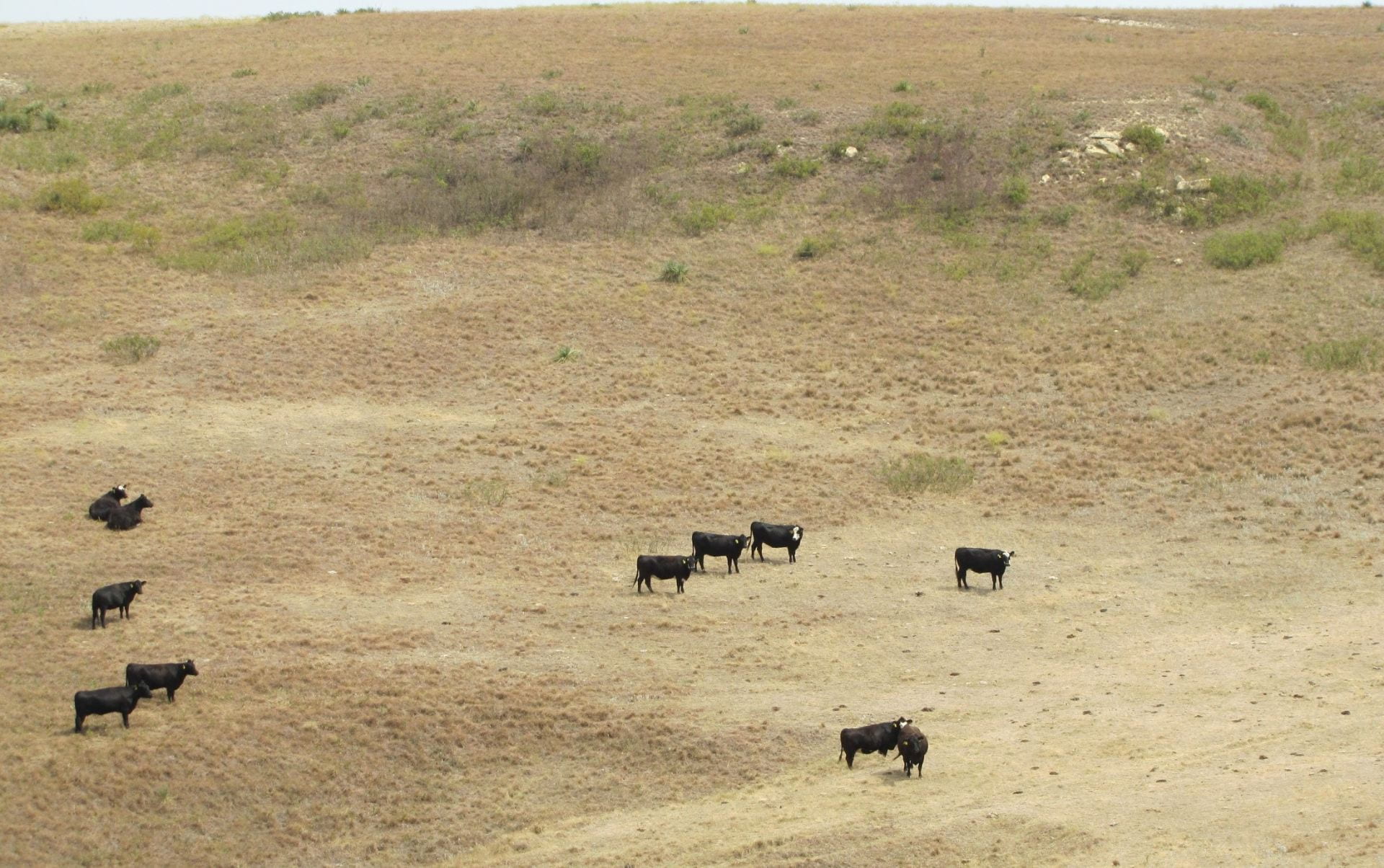By Keith Harmoney, range scientist, Hays
I was recently asked how the drought of 2022 will affect forage growth in 2023 and how drought-stricken pastures should be managed during the fall and winter prior to next growing season. These questions point me to results of a grazing study during the driest year on record at the KSU Agricultural Research Center at Hays in 1956. Looking back at 1956 and nearly 80 years of grazing studies to date, the stocking rate study being conducted that year also produced the lowest pasture yields that have been recorded at the Research Center.
In fact, grazing animals were removed in August of 1956 from the high stocking rate treatment of the study because animals simply did not have enough forage left in pastures to graze through October, the time that animals were supposed to be removed according to the study protocol. The heavy stocking rate pasture was essentially a tabletop. However, the driest year on record at Hays in 1956 was followed the next year in 1957 by an above average season of precipitation. In 1957, all of the pastures of the different stocking rate treatments in the study responded with above treatment average forage production from the above average precipitation, even in the heavy stocked pastures.
Of course, the heavy stocked pastures didn’t produce as much total forage as the moderate or light stocked pastures of the study, mainly because of lower vigor, less residue and litter cover to capture the rainfall, and a composition of shorter grass species going into the severe drought year. So, grazing history did have an impact on yield potential when above average precipitation was received again in 1957. The rainfall in that current year of 1957 was the main factor in getting forage production back above treatment averages that year, and the prior use of the pastures was a main factor in determining the production level of that average. Prior pasture use history is even more important in prolonged droughts.
John Weaver, one of the early pioneers of grassland studies, showed in his research of multiple years of drought in the 1930’s in pastures near Hays that pastures with a history of heavy utilization suffered much more plant loss and production loss during drought than pastures with moderate or no use. The main takeaway is that next year’s late spring and early summer rainfall of 2023 will be the main driver of whether pastures get back to typical production next summer, and the condition of the pasture (its history of how heavily it was defoliated or utilized) going into the drought will determine if that average forage production potential is a high yield or low yield for the soils of the area.
Many areas of western Kansas had grass that went dry and dormant and quit photosynthesizing this summer during the middle of the 2022 growing season. In essence, these pastures had an early winter dormancy, and hopefully had enough carbohydrates stored that they survived through the summer and will make it through the winter. These pastures will also need enough stored carbohydrate to start good, vigorous growth next spring. Pastures with a history of balanced utilization should have a stored energy level that allows them to withstand the drought better and have a higher probability of getting back to desired production than pastures with a history of heavy utilization going into the drought.
For pastures that were grazed this summer after the grasses were already dormant, removing that dry matter or foliage didn’t hurt its ability to store more carbohydrate, the leaf had already stopped photosynthesizing. The one main detriment that using that dried and dormant forage will have is that it may decrease water capture from rain and snow events when they occur again. The removal of more of that standing forage and leaf area will allow more water to run off the surface, and the litter loss will decrease infiltration. So, grazing those dormant leaves won’t really hurt the grass itself, but may extend the water deficit if too much of the summer dormant forage is removed so that the pastures don’t have enough surface litter and standing residue to capture water when it falls again.
Water infiltration data at our Research Center in Hays shows that pastures with moderate use have almost twice the water infiltration as pastures with a history of heavy utilization and less soil cover. Some of that dormant leaf material should also remain to provide some shading and insulating cover to protect grass crowns from excessive summer soil temperatures or freezing injury through the winter. So, the grass won’t suffer any direct injury from grazing the summer or winter dormant forage and it would not affect the carbohydrate status because photosynthesis has already stopped, but producers do need to think about the secondary effects of removing that dormant residue, especially on water capture capability, whether the removal is done on dormant grass in the summer or in the fall and winter.
We know droughts will occur in Kansas; the only mystery is in trying to predict which years it will happen. Hopefully most producers can formulate a game plan for drought to keep in their back pocket so that when growing seasons like 2022 occur, they can pull out their game plan and try to follow it accordingly.
